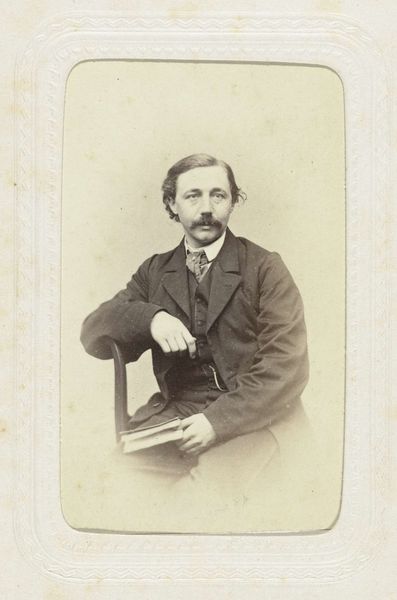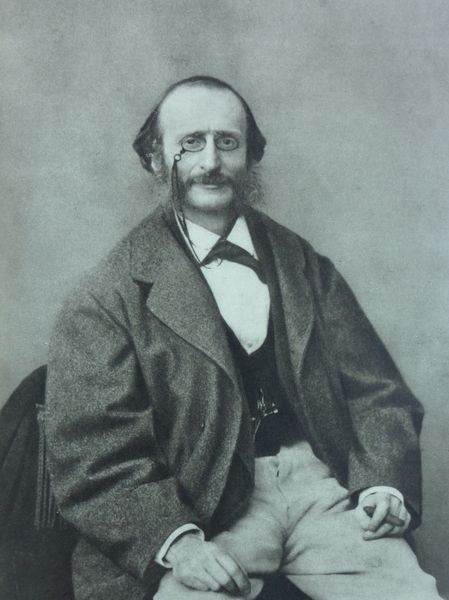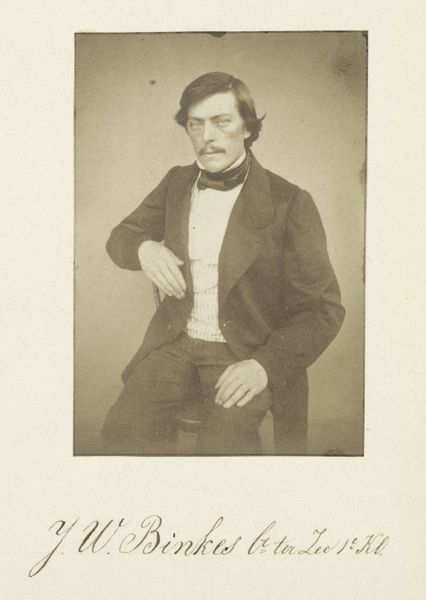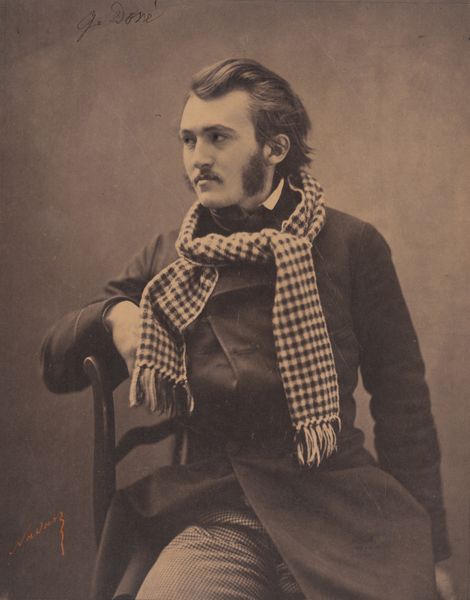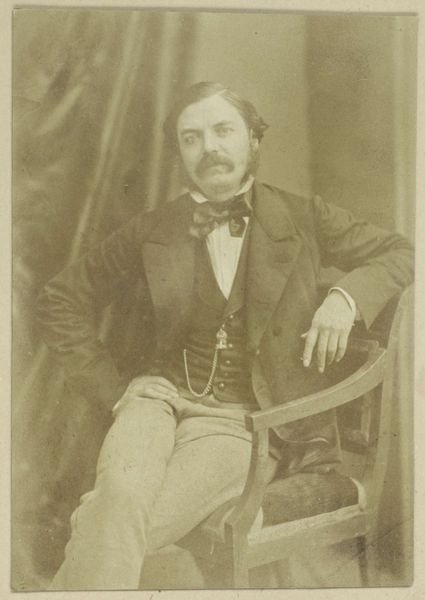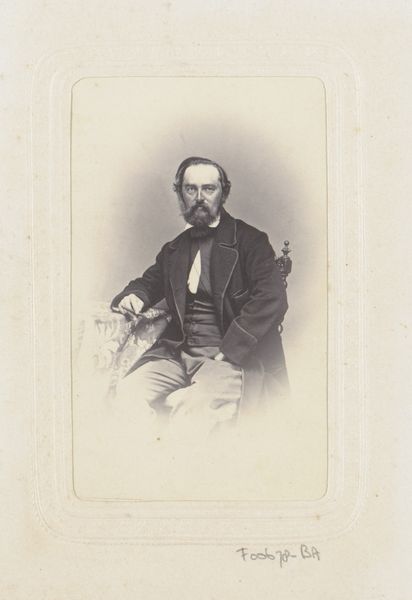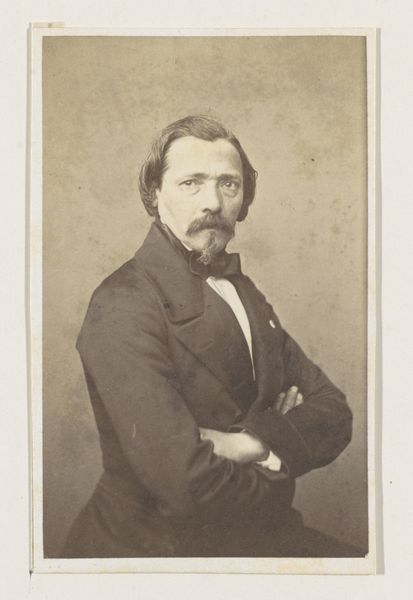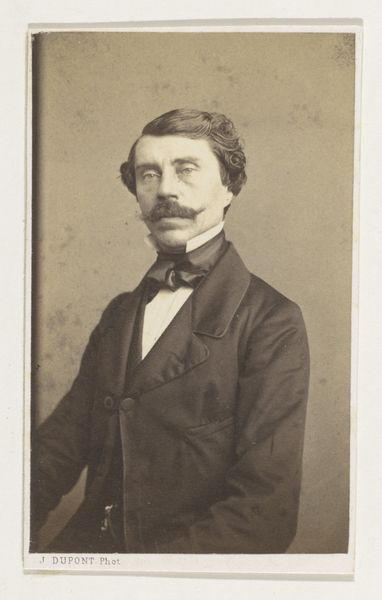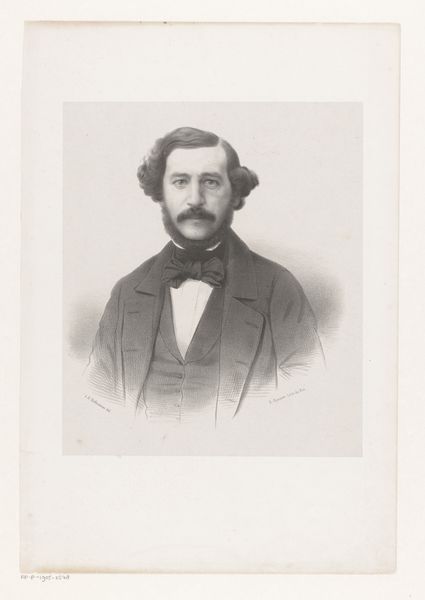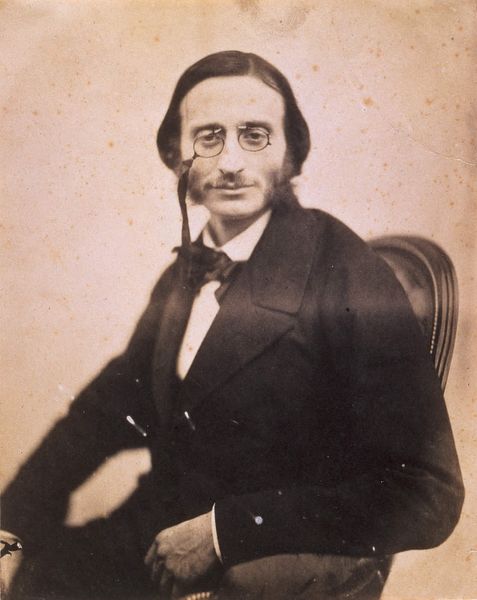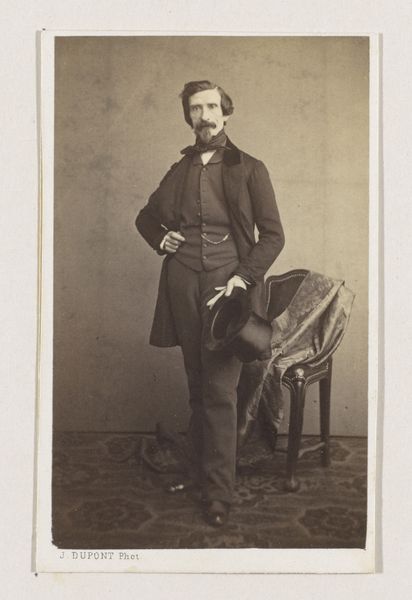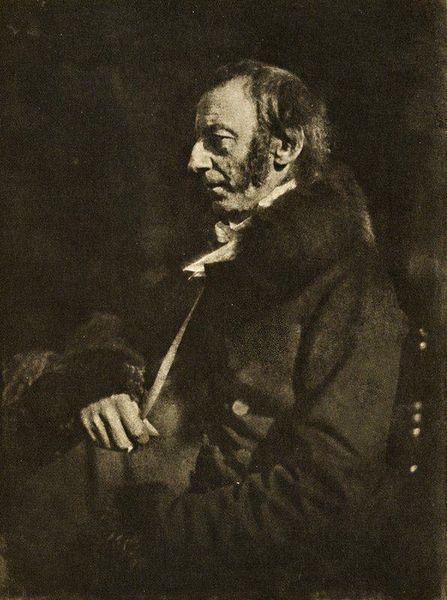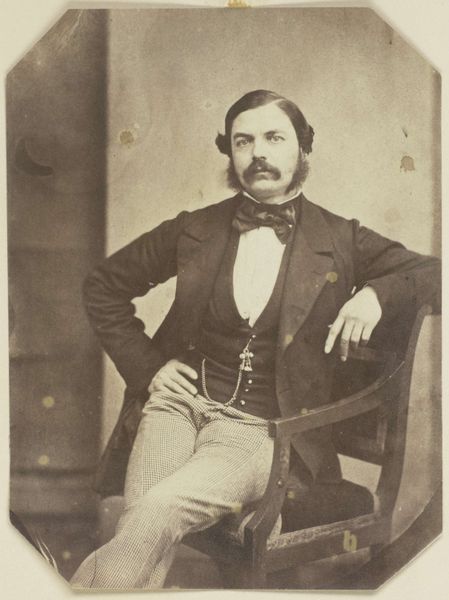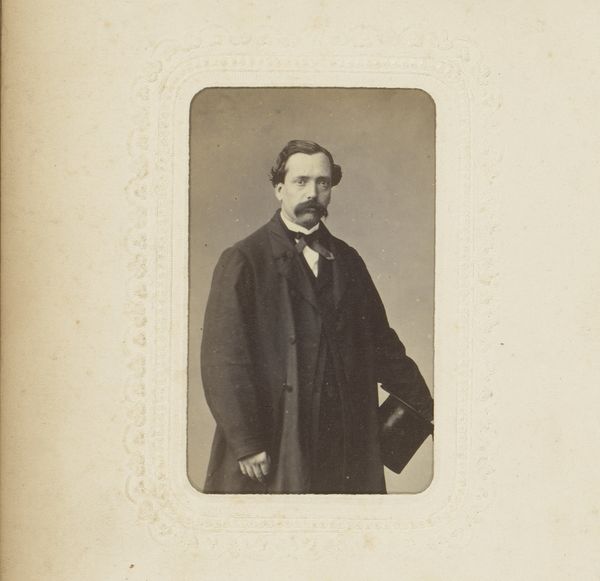
Copyright: Public domain
Curator: Nadar's 1880 photograph, titled "Jacques Offenbach", presents us with a rather intriguing character. What are your initial thoughts? Editor: I find myself immediately drawn to the sepia tones, their warmth softens the rather intense gaze of the subject. There's also something fascinating in how the light falls across his face, accentuating the details and textures. Curator: Nadar's portraits often served a purpose beyond mere likeness, operating almost as promotional material. Here, he captures Offenbach, a prominent composer, in what I interpret to be a dignified yet accessible pose, reinforcing his established persona to the public and securing his legacy within the cultural narrative of the time. Editor: I'd agree about the accessible nature of the pose. His leaning posture feels very natural and relaxed, doesn't it? Note also how the composition itself is subtly masterful. The soft focus and limited depth of field isolate Offenbach. Everything seems to draw the eye right to his face, particularly those spectacles. Curator: Indeed, the glasses are a focal point, hinting perhaps at Offenbach's intellectual prowess and his engagement with the artistic circles of Paris. And don't forget the cultural context: photography itself was still a relatively novel medium. Nadar's studio became a haven for artists and intellectuals, influencing how prominent figures were presented to society. Editor: You know, looking closely, there's also a certain intentionality in the tonal gradations. The dark coat contrasting against the lighter background creates a sense of depth. Also, it brings forth what seems to be implied narrative – he’s peering into the light; could be something related to his musical visions. Curator: Possibly. The image does become symbolic beyond just its simple representative nature. It’s all quite self-conscious, of course, both for the photographer and sitter. But that’s what gives these early photographs so much weight and staying power as documents of the era and effective visual tools of image making. Editor: I agree entirely. The interplay of light and shadow, combined with the social positioning, gives us a picture much deeper than a mere snapshot. Curator: Precisely. It shows the power of photography to both capture and create historical narratives. Editor: Yes, and a wonderful example of how a seemingly straightforward portrait can offer layers of aesthetic delight and social context.
Comments
No comments
Be the first to comment and join the conversation on the ultimate creative platform.
